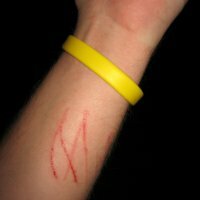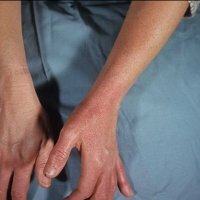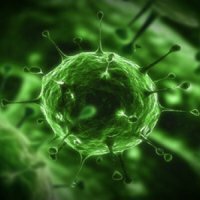Yellow fever: symptoms, treatment, inoculation
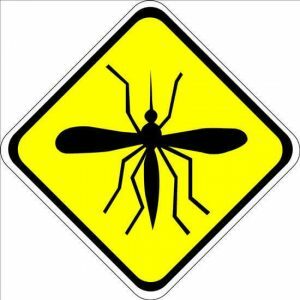
Annually about a yellow fever dies about 30 thousand people, most of whom are residents of Africa.This is explained by the habitat of the vectors of the infection.The disease is particularly dangerous and is characterized by severe symptoms, often ending with a fatal outcome for the patient.
Table of contents: Background, history Causes of the disease Yellow fever incubation period Yellow fever symptoms Yellow fever diagnosisBackground, history
Yellow fever, or amaryllosis, is a natural focal disease of the viralCharacter.Its causative agent is a virus that has clinical signs similar to malaria .It is interesting that the same mosquitoes carry the causative agents of both diseases - Aedes, Haemogogus, so a few decades ago these ailments were constantly confused.Later, with the advent of technical means for their accurate diagnosis, the situation radically changed.Meanwhile, until now doctors diagnose combined forms of the disease, when a person manifests the symptoms of malaria and yellow fever at the same time.
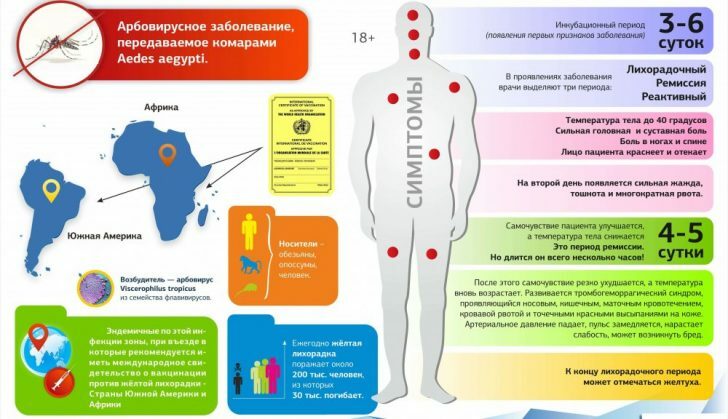
Please note! Yellow fever is quite an old disease.Its first epidemic broke out as early as 1648 in South America, although its regular outbreaks are also registered in African countries.This is explained by the ability of mosquitoes to infect humans only at high temperatures( above + 18 ° C).Every year the number of people affected by it is steadily growing, in some cases reaching 200 thousand people a year.
It is known that the term "yellow fever" was invented by colonists in Barbados in the XVII century, although the Spaniards for a long time called the disease "black vomiting", and the British - "Yellow Jack".Just at that time in the British colonies from mouth to mouth passed a legend according to which the yellow fever was picked up by a pirate.Not wanting to infect his team, he ordered to take him to a distant island with looted treasures and leave there, which was done.
However, a day later a Spanish legion arrived on the island, hanging a patient and taking with him treasures.True, he could not reach the inhabited coasts - the whole team died in terrible agony from infection, and the disease has since been named after the famous pirate.
Important! Yellow fever is considered dangerous not only because of severe symptoms, but also because of the high mortality rate.According to official data, it reaches 50%, however, doctors say that not all cases of the disease are fixed.Most often this only applies to severe forms.
Causative agent
For the first time about the yellow fever virus began talking in 1901, when its pathogen was discovered.
The causative agent itself is referred to as flaviviruses because of the common symptoms inherent in this group of viruses.These include:
-
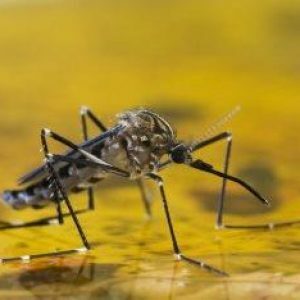 instability to the environment( the virus quickly dies outside the vector or infected person);
instability to the environment( the virus quickly dies outside the vector or infected person); - low resistance to disinfectants, including those based on chlorine;
- quick death in high temperature conditions - above + 60 ° C, although when dried the virus can survive even in a hotter environment;
- resistance to freezing - in such conditions it is able to live for several years;
- Fear of acidic medium and ultraviolet.
The main vectors of yellow fever are mosquitoes, although there are also cases of infection from monkeys, hedgehogs, rodents or an infected person, for example, if his blood enters an open wound of a healthy person.
Hence the types of the disease:
- rural - when mosquitoes bite monkeys, and then humans;
- urban - is common in settlements and develops as a result of mosquito bites, infected from sick people.
Important! In the past 20 years, an increase in the number of patients with urban yellow fever has been recorded.This is explained by a decrease in immunity, deforestation, climate change, as well as urbanization and population migration.
Yellow fever incubation period
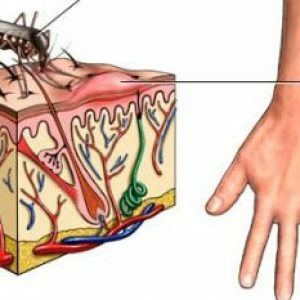 When a person bites an infected mosquito, a virus is transmitted to it, which first appears in the lymph, and then, through the lymphatic ways, is carried throughout the body.From that very moment, getting into vital organs - lymph nodes, bone marrow, liver, kidneys, it accumulates in them and multiplies, provoking serious damage.
When a person bites an infected mosquito, a virus is transmitted to it, which first appears in the lymph, and then, through the lymphatic ways, is carried throughout the body.From that very moment, getting into vital organs - lymph nodes, bone marrow, liver, kidneys, it accumulates in them and multiplies, provoking serious damage.
Meanwhile, the first changes in the state of health a person notices immediately.The incubation period lasts an average of 3 to 6 days, although people with strong immunity can stretch up to 10 days.That is why, 10 days before the trip to countries where yellow fever outbreaks are often observed, tourists are vaccinated.
Please note! Despite the severe symptoms and high susceptibility of a person to ailment, after vaccination, one develops a permanent immunity to yellow fever for a long time.The same immunity is produced in a person who has been ill with it.
Symptoms of yellow fever
Symptoms of the disease directly depend on the period of its course.There are only three of them:
- initial feverish;
- remission;
- venous stasis.
The initial febrile period is manifested after the incubation period.
At this time, the first symptoms of yellow fever appear abruptly in a person, which are expressed in:
-
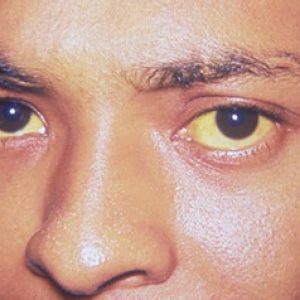 rapid temperature rise( up to 39С - 41С);
rapid temperature rise( up to 39С - 41С); - appearance of pain in muscles, chills, severe headache;
- appearance of nausea and vomiting, in which mucus is found in the vomit, and then bile;
- is accompanied by a thirst and reddening of the skin, especially in the face, neck, and abdomen, which is replaced by yellowness;
- appearance of lacrimation, phobia of light, swelling of the eyelids;
- increased heart rate( it can reach 130 beats per minute);
- increased internal organs, in particular, the spleen and liver;
- occurrence of nasal bleeding, bleeding gums;
- drop in blood pressure.
Important! All these symptoms persist up to 5 days, and in severe cases - up to 10 days.At the end of this time, either a lethal outcome or a new period of the disease occurs.
For remission, the symptoms of yellow fever are as follows:
- , the temperature is normalized;
- termination of vomiting;
- improvement of coloring of skin, disappearance of puffiness;
- relief of the patient's condition.
This does not last long, only a few hours, after which a more difficult period occurs, which marks:
- jaundice;
- internal bleeding - intestinal, uterine;
- increases nasal bleeding and bleeding gums, to which small hemorrhages under the skin are added;
- temperature increase;
- drop in blood pressure;
- a rare pulse and muffled heart tones;
- problems in the work of the kidneys, heart, liver, nervous system;
- sometimes there are hallucinations, delirium.
The outcome of yellow fever can be renal, hepatic or heart failure, which results in the patient dying, or full recovery. The risk of death is significantly reduced already on day 8 after the first symptoms manifest.
Depending on the condition of the patient, physicians distinguish:
- is an easy form of the disease;
- medium-heavy;
- heavy;
- is lightning fast.
Diagnosis
The doctor can diagnose the diagnosis correctly by analyzing the clinical manifestations of the disease by interviewing the patient about travel and trips that preceded the appearance of symptoms.
Additional diagnostic methods for yellow fever are:
-
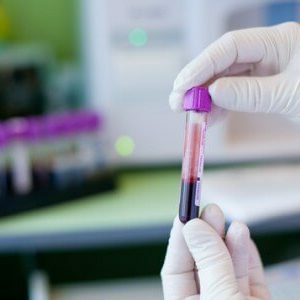 Blood test - general and biochemical - for neutrophil, leukocyte and platelet levels.The level of hepatic enzymes and bilirubin, creatinine and urea that can indicate hepatic insufficiency is also monitored.In addition, special attention is paid to the level of glucose, the time of clotting of blood is determined.
Blood test - general and biochemical - for neutrophil, leukocyte and platelet levels.The level of hepatic enzymes and bilirubin, creatinine and urea that can indicate hepatic insufficiency is also monitored.In addition, special attention is paid to the level of glucose, the time of clotting of blood is determined. - Urine analysis for the presence of protein, erythrocytes, epithelium.
- Carrying out a serological test that allows to detect the presence of antibodies to the causative agent of yellow fever in the blood.These tests allow you to finally make sure of the diagnosis.
- Chest X-ray to exclude bacterial pneumonia, which is a frequent complication of the disease.
- Computerized tomography to confirm or exclude intracranial bleeding and cerebral edema.
- ECG for the detection of arrhythmia and myocarditis.
- Liver biopsy to track the degree of damage to the liver.
- PCR is the identification of the virus itself in the patient's blood.In connection with the increased risk of infection is carried out in a special laboratory.
Please note! The doctor may prescribe other studies to assess the general condition of the patient due to infection with yellow fever.
Treatment for yellow fever
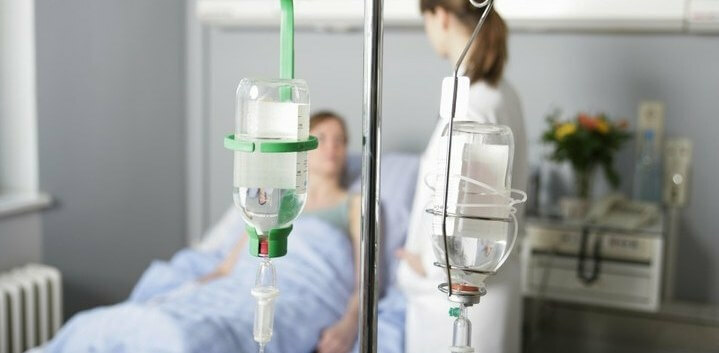
The success of treating a disease directly depends on how quickly a person consults a doctor after infection.To avoid new infections, he is subsequently placed in a separate box of the infectious disease department of .In view of the fact that there is no specific medicine that could stop the development of the ailment, all the forces of the doctors at this time are directed to the relief of the patient's condition.
Usually at this time it is given and prescribed:
- anti-inflammatory, steroidal and non-steroidal;
- antiallergic;
- Haemostatic;
- diuretics;
- solutions of glucose, dextrans, salts to eliminate signs of intoxication;
- vitamin complexes - vitamins B1, B2, C, K;
- heparin for the normalization of clotting time;
- glucocorticoids - to stop vomiting and eliminate shock;
- anesthetics;
- antipsychotics;
- hemodialysis provided the diagnosis of renal failure;
- antibiotics provided bacterial inflammation develops.
Important! With yellow fever, large blood loss is possible, which is compensated by additional blood volumes.In addition, the patient is recommended bed rest, a diet based on the consumption of large amounts of vegetable fats and dairy products.
Vaccination against yellow fever
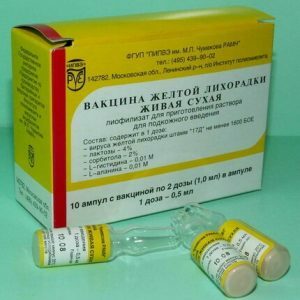 In order to prevent outbreaks of yellow fever authorities of countries in which it is often diagnosed, closely monitor population migration, as well as cargo transportation.In addition, there is an active fight against the vectors of the disease.People are advised to stay away from ponds and use individual insect repellent.
In order to prevent outbreaks of yellow fever authorities of countries in which it is often diagnosed, closely monitor population migration, as well as cargo transportation.In addition, there is an active fight against the vectors of the disease.People are advised to stay away from ponds and use individual insect repellent.
Meanwhile, all these activities can be powerless if there is no immunization of the population.It consists in vaccination, which is mandatory for people who often travel to countries where the yellow fever epidemic rages from time to time.First of all, we are talking about Africa, Central and South America.
According to the International Health Regulations, entry into the territory of these states may require an international certificate of vaccination against yellow fever. If it is contraindicated, require a document showing this.
Note: The vaccine contains a weakened virus.It is already after 7 days that it makes it possible to develop strong immunity for the next 10 to 35 years in 95% of people.
The drug is considered the most effective and safe, meanwhile it has its contraindications, namely:
- age to 9 months if there is regular immunization;
- age is up to 6 months if there is an emergency immunization in case of an epidemic;
- pregnancy, although it may not be taken into account if the epidemic develops;
- is an allergy to egg white;
- immunodeficiency caused by HIV;
- diseases of the thymus gland.Yellow fever is a dangerous disease, which at best leads to the development of serious complications, and at worst - to a lethal outcome.
Sovinskaya Elena

